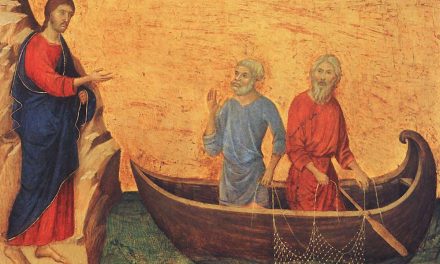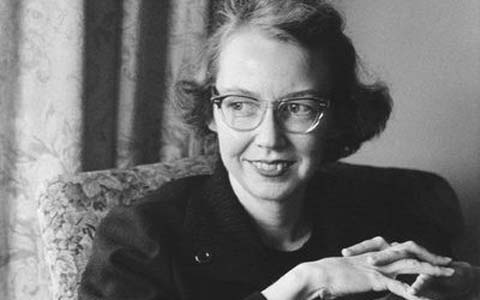 This weekend in Madrid, Pope Benedict will be joined by a million young Catholics and their chaperones to celebrate the 26th World Youth Day. This encounter of the successor of St. Peter and the Catholic youth of the world was begun by Blessed John Paul II in 1985 precisely in order to give the world’s Catholic youth an opportunity to come together to grow in faith in Jesus Christ and find from him the answers to the most important questions that perennially pester young, restless hearts.
This weekend in Madrid, Pope Benedict will be joined by a million young Catholics and their chaperones to celebrate the 26th World Youth Day. This encounter of the successor of St. Peter and the Catholic youth of the world was begun by Blessed John Paul II in 1985 precisely in order to give the world’s Catholic youth an opportunity to come together to grow in faith in Jesus Christ and find from him the answers to the most important questions that perennially pester young, restless hearts.
World Youth Days are “a fascinating witness that young people give of themselves,” Blessed John Paul II reflected in the 1993 autobiographical interview “Crossing the Threshold of Hope.” Two of the largest crowds in the history of civilization — 5.6 million in Manila in 1995 and 2.8 million in Rome in 2000 — were for World Youth Days and since the beginning, they have been “powerful means of evangelization” not only for the young, not only for their societies, but also for the pope, bishops, priests and the entire Church.
“What I am going to say to you,” Blessed John Paul II would often tell young people, “is not as important as what you are going to say to me. You will not necessarily say it to me in words; you will say it to me by your presence, by your song, perhaps by your dancing, by your skits and finally by your enthusiasm.” John Paul II noted that there is deep theological meaning to the enthusiasm of the young. In it, we find a reflection of “the original joy God had in creating man. The young experience this same joy within themselves. This joy is the same everywhere, but it is also every new and original. The young know how to express this joy in their own special way.” This youthful, enthusiastic joy for life and for the faith helps the Church remain young, urging even aging popes, John Paul II noted autobiographically, to “be young” and not “to forget his experience, his discovery of youth and its great importance for the life of every man.”
Many in Church circles thought the success of World Youth Days had less to do with what John Paul II described about the youthful search for God and answers and more to do with John Paul II’s magnetic personality, which — like famous rock stars or celebrities— could draw vast crowds for a Catholic jamboree. These critics anticipated that after John Paul II’s death, and especially after the election of a much more reserved and cerebral successor, World Youth Days would begin to lose their appeal. The opposite, however, has happened. World Youth Days have not only retained their vigor, but they’re growing in intensity, as more are discovering that the particular appeal of the Pope is not personal but vicarious, that he is a living reminder to the young that Christ is alive in his Church he founded, that through him Christ continues to care for and speak to the young of today, that Christ’s words and promises did not have an expiration date.
After the success of the 2008 World Youth Day in Sydney, Pope Benedict reflected on what these Days teach the whole Church. “Popular analyses tend to view these days as a variant of contemporary youth culture, a sort of rock festival in an ecclesial key, with the Pope as its main attraction. Such analyses presume that, with or without faith, these festivals would be basically the same; and thus the whole question of God can be set aside. Even some Catholics would seem to agree, seeing the whole event as a huge spectacle, magnificent perhaps, but of no real significance for the question of faith and the presence of the Gospel in our time. They might be ecstatic celebrations, but in the end they would really change nothing, nor have any deeper effect on life. This, however, leaves completely unexplained the real nature of these Youth Days and the specific character of their joy, and their power to build communion.”
This power, he said, comes from the fact that the World Youth Day experience involves far more than a trip to a big city for a weekend celebration with young people from around the world. It’s an interior pilgrimage that begins even years prior to the actual event and continues long after it. “It has to be realized,” Pope Benedict clarified, “that World Youth Days do not consist only of the one week when they are brought to the attention of the world. They are preceded by a long process of preparation both practical and spiritual. The [World Youth Day] Cross, accompanied by the icon of the Mother of the Lord, goes on pilgrimage to many countries. …The encounter with the World Youth Day Cross, which is touched and carried, becomes an interior encounter with the One who died for us on the Cross. The encounter with the Cross awakens within the young people the remembrance of the God who chose to become man and to suffer with us. We also see the woman he gave to us as our Mother. The solemn World Youth Days are nothing if not the culmination of a long process in which the young people turn to one another and then, together, turn to Christ. … Thus, the Pope himself is not the star around which everything revolves. He is completely and solely a vicar. He points beyond himself to the Other who is in our midst.”
The “center of the whole event” is, he said, precisely the encounter with Jesus Christ in the Saturday night Vigil of Eucharistic Adoration which continues into the solemn celebration of Mass on Sunday. “There takes place something that we ourselves cannot bring about, yet something for which we are always awaiting. Christ is present. He comes into our midst. The heavens are rent and the earth filled with light. This is what makes life joyful and free, uniting people with one another in a joy that cannot be compared to the ecstasy of a rock festival.”
Likewise, “just as a long journey precedes the celebration of World Youth Day, a continuing journey follows it. Friendships are formed that encourage a different way of life and that give it deep support. The purpose of these great Days is, not least, to inspire such friendships and so to create places of living faith in the world, places that are, at the same time, settings of hope and practical charity.”
In Madrid this weekend, Pope Benedict is going to be trying to help not only those in attendance but the Church throughout the globe watching on television or reading his homilies create “places of living faith in the world,” to reflect on how the Holy Spirit seeks to help us all become “planted and built up in Jesus Christ, firm in the faith” (Col 2:7).
Pope Benedict chose these words of St. Paul as the theme for this year’s World Youth Day because he wanted to help the young, assailed by a secularist and relativistic culture, to develop strong and indestructible roots in Christ so that they may withstand the spiritually desiccating forces within the culture; to establish the foundation of their life anew on the rock of Christ’s words so that it can withstand the storms (Lk 6:47-48); and to become stronger through Christ’s cross not only to live their faith with enthusiasm but share the treasure with others. In his letter to the youth of the world inviting them to World Youth Day, the Pope acknowledges that the decision to believe in Jesus Christ and to follow him “is not an easy one” but one that is often “hindered by our personal failures and by the many voices that point us towards easier paths.” He urges them, however, never to be discouraged, but to find their strength in Christ, in the martyrs, in the Blessed Virgin Mary, who all provide for us an inspiring example of what it means to be rooted and established on Christ the rock, strong in faith.
Let us pray for the 60 young people and chaperones from our Diocese who are present in Madrid, the million who are with them, and the millions more who will be following World Youth Day virtually through the media, that that they all may be strengthened in faith in the way Pope Benedict describes and become a leaven to strengthen us all and make us younger, more enthusiastic and joyful in our living of the faith.
Please help us in our mission to assist readers to integrate their Catholic faith, family and work. Share this article with your family and friends via email and social media. We value your comments and encourage you to leave your thoughts below. Thank you! – The Editors













